I have a reference data set, p,
p=structure(list(v = 0:26, t = c(Inf, 1.016, 0.568, 0.418666666666667,
0.344, 0.2992, 0.269333333333333, 0.248, 0.232, 0.219555555555556,
0.2096, 0.201454545454545, 0.194666666666667, 0.188923076923077,
0.184, 0.179733333333333, 0.176, 0.172705882352941, 0.169777777777778,
0.167157894736842, 0.1648, 0.162666666666667, 0.160727272727273,
0.15895652173913, 0.157333333333333, 0.15584, 0.154461538461538
)), .Names = c("v", "t"), row.names = c(NA, -27L), class = "data.frame")
Which p$v and p$t have the following relation :
t=(0.16*(0.75*v + 5.6))/v
my second data set is measured data ,w, contains the same variable like :
w=structure(list(v = c(0, 1, 2, 3, 4, 5, 6, 7, 8, 9, 10, 11, 12,
13, 14, 15, 16, 17, 18, 19, 20, 21, 22, 23, 24, 25, 26), t = c(0.235291176470588,
0.354020375722543, 0.310974343434343, 0.25272725498699, 0.20351968240702,
0.163155804025208, 0.132330740162655, 0.108593108108108, 0.0859813015873016,
0.0655131899302683, 0.0492580103144236, 0.0368029846567365, 0.030538003253355,
0.0300744415648525, 0.0347586421891237, 0.0451097744360902, NA,
NA, NA, NA, NA, NA, NA, NA, NA, NA, NA)), .Names = c("v", "t"
), row.names = c(NA, -27L), class = "data.frame")
My reference data p, follows a power law, I would like to do a prediction based on power law fit on the data to replace the NA on my measured data. How could I do this in R ?
